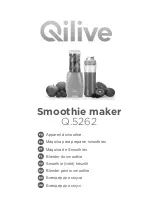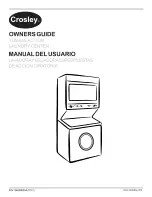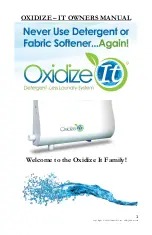
HANDLES AND KNOBS:
• The handles and knobs can get very hot under cooking conditions. As a
general precaution, we always recommend the use of a potholder when
handling hot cookware.
• When cooking, make sure handles are not positioned over other hot burn-
ers.
• Some handles and knobs that are attached with screws may loosen over
time. If this occurs, they should be retightened. Do not over tighten, as this
could result in damage to the lid or knob.
• During use, keep all handles out of reach of children and avoid overhang-
ing over the cooking surface, to avoid potential knocks and possible injury.
UTENSILS:
Wooden, silicone, or plastic utensils are recommended for most ceramic
surfaces.
COOKING ON A STOVE TOPS:
If properly maintained, the non-stick finish will provide years of great cook-
ing performance and easy cleaning. Preventing damage to the ceramic
finish will help to maximize product performance. You can protect and get
the most out of your cookware by following these instructions:
• Never cut food directly in the pan or gouge the ceramic surface in any way.
• Avoid overexposure to food high in salt, as it can cause the coating to peel
off.
• The ceramic surface may become slightly darker with use. Slight surface
marks or abrasions are normal and will not affect the performance of the
ceramic coating.
• Ceramic cooking sprays are not necessary with ceramic cookware. The
use of such sprays may create an invisible buildup on the surface of the pan
that will affect the pan’s ceramic properties.
TO BREAK A VACUUM SEAL:
The uniquely designed rims and lids form a perfect fit with the base cook-
ware to reduce the evaporation of liquids. If you leave the lid on after turning
the heat down or off, a partial vacuum may form, which will seal the lid to
the pan. To break the seal, turn on the heat for a few moments, and the
cover will come off easily. If you don’t want the lid to seal to the pan, remove
the lid or set it slightly ajar before turning off the heat.


























